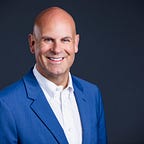What It Means When Cancer Just Disappears
It’s not as rare — or random — as people might think
 At a recent medical conference, I gave a talk on a phenomenon in medicine that remains stubbornly shrouded in mystery: spontaneous remission. Spontaneous remission is supposedly vanishingly rare, and is brushed off as a kind of fairy tale unworthy of real scientific investigation — and yet this talk was heavily attended by curious medical professionals.
At a recent medical conference, I gave a talk on a phenomenon in medicine that remains stubbornly shrouded in mystery: spontaneous remission. Spontaneous remission is supposedly vanishingly rare, and is brushed off as a kind of fairy tale unworthy of real scientific investigation — and yet this talk was heavily attended by curious medical professionals.
Spontaneous remission is exactly what it sounds like: the sudden and unexpected remission of a disease that’s expected to progress — usually, one that’s expected to progress fatally. Instead, the disease reverses course, regresses, even vanishes completely. Cancer fades mysteriously from the body. Tumors melt like ice cubes on a hot summer day. A patient shoots past her expiration date, apparently unaffected by her terminal diagnosis, maintaining health and vitality long past what doctors thought possible.
Spontaneous remission isn’t as rare as we thought — we just aren’t talking about it. Nor, I believe, is it random.
Why does it happen? The standard response in medicine is that we have no idea. And further, we have little interest in finding out. Spontaneous remission is a random stroke of luck — some would say “a miracle.” But overall these cases are considered too random, too rare, to offer us anything of scientific or medical value. We dismiss them as flukes and outliers; we don’t include them in our research. And we certainly don’t talk about them with patients. We don’t want to give people “false hope.”
And yet when I asked my audience at the conference — a roomful of physicians from all over the country — how many of them had ever seen a spontaneous remission in their career, almost every hand went up. I then asked how many of them had written up the incident for the medical literature or otherwise reported it. The hands dropped.
Spontaneous remission isn’t as rare as we thought — we just aren’t talking about it. Nor, I believe, is it random. And the hope it offers is anything but “false.”
I began studying spontaneous remission almost two decades ago at the urging of a friend who told me she was seeing real recoveries at a spiritual healing center. I brushed it off, assuming that any supposed “miracle” healing could be explained in any number of ways — misdiagnosis, wishful thinking, a disease that was going to resolve anyway. But more reports flowed my way, cases with hard evidence of diagnosis and recovery that I could not dismiss. Like the story of Mirae Bunnell.
Mirae’s doctors have a nickname for her: “The Miracle.” In 2014, she was diagnosed with advanced metastatic melanoma, which presented as a large tumor in her neck that threatened to cut off her breathing and blood flow. Her doctors worked to shrink the tumor to make her more comfortable but broke the news to her that she would not survive.
Seven months later, the tumor was gone. All that remained was a wispy, inky swirl — a shadow left behind by the tumor that had almost ended Mirae’s life. What happened? Her doctors had no idea. “There must have been a lot of people praying for you,” was all they could offer.
Mirae says that the care she received was exceptional. Her only misgiving was that her doctors didn’t seem more interested in why her remarkable recovery might have occurred. And indeed, if we continue to think of these cases as random accidents of biology, it’s easy to miss the bigger picture. But after studying over a hundred individual cases across the spectrum of illness — cancer, diabetes, autoimmune conditions, heart disease, even depression — what I found was a distinct pattern of transdiagnostic factors.
“It was foremost a struggle of the mind and the spirit,” Mirae said about her own astonishing recovery. “The body followed.”
Survivors of incurable diseases made radical changes to their lives. They changed the way they ate, focusing on high-nutrient diets free of sugar and processed foods. They leaned into daily habits and exercise routines that made them feel good. They ditched careers or relationships that were limiting or toxic. They addressed their stress response, ending the damaging cycle of chronic fight-or-flight that keeps our bodies awash in corrosive stress hormones. When faced with a terminal diagnosis — an “end date” — they asked themselves the question: what do I want to do with the time I have left? And then they did it. Finally, they examined their own deep-seated beliefs about who they were — a process I can only describe as “healing your identity.”
What does that mean — to heal your identity?
It means that you need to see and focus on what is right and good about you. You need to actively eliminate false, negative beliefs about yourself that leave you questioning your value. One of the most common things that people have said to me over the years is that it took an illness for them to wake up and realize that they needed to stop taking care of others or responding to the perceived expectations of others instead of also doing what it takes to create life and well-being within them.
What makes you come alive? What gives you a life worth living? As my friend Gabor Mate, physician and trauma expert, says: If you don’t know how to say no, your body will eventually say no for you. It might feel selfish at first, but it’s not. If you make the hard choices to create a life that puts a light in your eyes and creates authentic well-being within you, you will absolutely change your relationship with others and your relationship with yourself. When that occurs, it is sometimes astonishing what becomes possible in a mind and body.
Those who recovered say that figuring out the real “story” of who they were was the key that allowed them to make every other potentially life-saving change. After two decades of research, I’ve come to believe that this lies at the very root of these astonishing recoveries.
“It was foremost a struggle of the mind and the spirit,” Mirae said about her own astonishing recovery. “The body followed.”
These cases might indeed be outliers, but they aren’t flukes. The definition of “spontaneous” in this context is “without cause.” But, in fact, there’s nothing spontaneous about spontaneous remission.
We study ultimate achievers in sports like Tom Brady and Serena Williams. It only makes sense that we should be studying the ultimate achievement in health. If I was ill, I would want to know not only what the average person does, but also what the ultimate achievers in health do.
Of course, there is still much we don’t know about spontaneous remission. But what we don’t know shouldn’t hold us back from acting on what we do know.
Mirae Bunnell sends a thank-you note to her doctors every year on Thanksgiving — the anniversary of the day that the pathology report came back telling them she was cancer-free. Her doctors are delighted to receive her cards. They pin them up on the office wall, saying, “We never get thank you notes!”
When Mirae repeated this at a family gathering, her brother-in-law pointed something out. “That’s because nobody lives,” he said.
But Mirae did. And so have many others who are coming forward now to tell their stories. If we want to open up new avenues to health and healing, it’s imperative that we listen.
